The gist: Sightline distills the key lessons from The Opportunity Agenda, an extensive set of resources aimed at connecting a range of policy goals to the fundamental belief in “opportunity for all.”
Four ways to connect to opportunity:
Education: Opportunity is about our hopes and dreams for a better future and education can unlock many doors. All children—rich or poor—should have the opportunity to fulfill their full potential.
Environment: No matter where we live, we have the right to a clean air, good food, and a healthy environment to work, live, and play.
Economy: As part of a common enterprise, we are linked in our successes and challenges. Our communities are stronger and more prosperous when we expand opportunity for all.
Equality: We know that an individual’s hard work alone cannot overcome the barriers of discrimination. Together, we have a responsibility to ensure a level playing field.
Who said it best? Check out quotes from Lyndon Johnson to Nancy Pelosi.
A User’s Manual: The Opportunity Agenda
1. Why focus on opportunity?
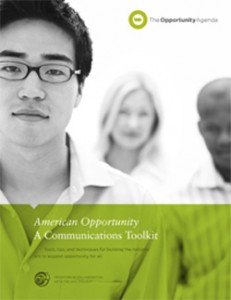 The ideal of opportunity is central to the North American story—a history of the “little guy” standing on equal ground with the powerful, the blue-collar hero, the shared triumph of the Civil Rights movement. Scholars refer to opportunity as a “level one frame”—a big idea, right up there with freedom, justice, and responsibility— which represents universally shared values.
The ideal of opportunity is central to the North American story—a history of the “little guy” standing on equal ground with the powerful, the blue-collar hero, the shared triumph of the Civil Rights movement. Scholars refer to opportunity as a “level one frame”—a big idea, right up there with freedom, justice, and responsibility— which represents universally shared values.
That’s why opportunity is a powerful starting point for communications about a range of issues. When we ground policy talk in language that expresses the value of opportunity, we stir up deeply held feelings about what makes us who we are and core beliefs about right and wrong.
2. What’s in the frame? The Basics
Opportunity means that everyone deserves a fair chance to achieve his or her full potential. Ensuring that fair chance requires fulfillment of shared values:
- Equality: The benefits and burdens of society should not depend on what we look like or where we come from;
- Security: We should all have the tools to meet our own basic needs and those of our families;
- Mobility: Where we start out in life should not determine where we end up;
- Voice: We should all have a say in the decisions that affect us;
- Redemption: People grow and change over time and deserve a chance to start over when things go wrong;
- Community: We share responsibility for each other and a linked fate, rising or falling together as a people.
3. About the Opportunity Agenda Project and Resources
A group called the Opportunity Agenda has conducted extensive research and developed tools to help articulate opportunity and to avoid some traps of the “opportunity frame” as well. Their aim is to ensure that the United States lives up to its promise as the “land of opportunity” for every person who lives here. (To our Canadian audiences: the Opportunity Agenda is particularly US-focused—but we believe the power of opportunity as a shared, instinctual value transcends borders.)
To offer true opportunity, researchers, communications specialists, and analysts at the Opportunity Agenda believe that we must acknowledge and address the barriers that keep people from achieving their full potential—whether it’s racial discrimination, lack of access to basic needs like health care, unequal access to quality education, or environmental injustice. At Sightline, we see how this applies to all of the sustainability issues we work on with advocates and communicators like you.
- You can find more information about current Opportunity Agenda work and communications tools on their web site.
- The Opportunity Agenda toolkit is available as a PDF.
4. Avoiding a Common Trap: Understanding Dueling Frames
Communications based in shared values represent fertile ground for bridging diverse groups and partisan divides. However, a shared value—and the frames or mental shortcuts it evokes—isn’t fail-safe. “Opportunity,” for example, means different things to different people. Here are the two opposing opportunity frames:
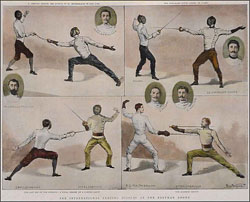 Frame 1: Individual responsibility. — According to the more conservative frame, opportunity is for the taking and anyone who works hard can climb the ladder of success and achieve the mythic “American Dream.” Those who don’t succeed are undeserving for one reason or another. This frame places the burden of seeking and accessing opportunity squarely on the shoulders of the individual. For example, the structural barriers faced by communities of color are often absent from an understanding of the problem of poverty in those communities. As linguistics scholar George Lakoff points out, you have to have boots to pull yourself up by their straps. The idea of individual responsibility fits the “strict father worldview” where “there will always be winners and losers.” In this view, winners are those with discipline and morality, and losers have only themselves to blame.
Frame 1: Individual responsibility. — According to the more conservative frame, opportunity is for the taking and anyone who works hard can climb the ladder of success and achieve the mythic “American Dream.” Those who don’t succeed are undeserving for one reason or another. This frame places the burden of seeking and accessing opportunity squarely on the shoulders of the individual. For example, the structural barriers faced by communities of color are often absent from an understanding of the problem of poverty in those communities. As linguistics scholar George Lakoff points out, you have to have boots to pull yourself up by their straps. The idea of individual responsibility fits the “strict father worldview” where “there will always be winners and losers.” In this view, winners are those with discipline and morality, and losers have only themselves to blame.
Frame 2: Community responsibility — An alternative frame sees the “land of opportunity” as an aspiration but not yet a reality for everyone. This frame recognizes that systemic obstacles including racism, sexism, and class, prevent many North Americans from achieving the “American Dream.” This “opportunity frame,” identified by The Opportunity Agenda project, assigns to the government—the community—a major responsibility for ensuring opportunity for all regardless of ability, race, gender, economic status, or ethnicity. What’s wrong with Frame 1? First, it’s damaging in that it fails to acknowledge discrimination and accountability or responsibility on the part of government or society at large.
Second, it assumes that discipline and determination are enough to overcome any social or economic obstacles. Frame 2 acknowledges that hard work alone doesn’t guarantee success and prosperity and that we as a community have a responsibility to make sure opportunities are available to all by breaking down as many systemic obstacles as possible.
Promoting Frame 2 — Our stories should focus on the cultural and political context that prevents a level playing field for all individuals. The idea of community responsibility is up against tough odds. In general, the mainstream media tends to reinforce the conservative frame because it makes for a “good story.” A feature about individuals who have achieved the American Dream against formidable odds (think Horatio Alger, thousands of newspaper stories about poor immigrant families or kids from the projects that make it big through hard work). Emphasis on this frame—of collective responsibility and tearing down obstacles to opportunity in our communities—can help shift the dialogue away from these pervasive individual success stories that are, in fact, the (more visible) exceptions to the rule.
More on the story of two (dueling) frames on page 10 of the Opportunity Agenda Toolkit pdf (page 8 when printed).
5. Powerful language: Founding Fathers, Sports Metaphors, and a Can-Do Spirit: The Importance of “Speaking American”
 In the US, and Canada as well, our opportunity message gets a boost when we “speak the language” of our audiences. This means evoking national identity and pride associated with the accomplishments of our history when it comes to opportunity; using everyday metaphors that resonate with our values; breaking complex concepts into concrete, visual narratives; and tapping into a sense of ingenuity and can-do spirit that defines a sense of national identity.
In the US, and Canada as well, our opportunity message gets a boost when we “speak the language” of our audiences. This means evoking national identity and pride associated with the accomplishments of our history when it comes to opportunity; using everyday metaphors that resonate with our values; breaking complex concepts into concrete, visual narratives; and tapping into a sense of ingenuity and can-do spirit that defines a sense of national identity.
Think about the sports metaphors that we use to describe opportunity: level playing field, fair play, a fair shot, rooting for the underdog. Susan Strong (creator of The Metaphor Project), delves into the importance of “speaking American” in this Metaphor Project essay.
6. Navigating the Toolkit
 You can find many practical tools for incorporating the Opportunity Frame, including strategies to better communicate your message in both one-on-one settings and through mass media. Here are some highlights:
You can find many practical tools for incorporating the Opportunity Frame, including strategies to better communicate your message in both one-on-one settings and through mass media. Here are some highlights:
- A unified voice makes all our communications stronger
Alan Jenkins, Phoebe Eng, and Dr. Brian Smedley, co-founders of The Opportunity Agenda, introduce the Opportunity Frame and its potential to unite progressive messages and constituencies. See page 5 of the Opportunity Agenda Toolkit pdf (page 3 when printed). - Brush up on the dimensions of the opportunity frame
The Opportunity Agenda defines “opportunity” as a fair chance to achieve one’s full potential. Find out why a true “Opportunity Society” would uphold these 6 core values: mobility, equality, voice, redemption, community, and security. See pages 8-9 of the Opportunity Agenda Toolkit pdf (pages 6-7 when printed). - Getting to work: Talking points, strategies, and sample copy for op-eds and press releases
All the tools you need to get started writing your own communications materials with the opportunity frame in place. See the Opportunity Agenda Toolkit pdf, Part II, starting on page 18 (page 16 when printed). - Rising Together – Senator Obama at Knox College
The SPIN Project dissects a commencement address delivered by Senator Barack Obama and diagrams his use of the Opportunity Frame. See page 14 of the Opportunity Agenda Toolkit pdf (page 12 when printed). - A case for frank communications about race
In “Framing at the Intersection of Racism and Opportunity,” Makani Themba-Nixon explains why it is important to talk effectively about racial justice. See page 27 of the Opportunity Agenda Toolkit pdf (page 25 when printed). - Case studies:
How advocates around the country have used the opportunity frame in their work. See the Opportunity Agenda Toolkit pdf, Part III, starting on page 39 (page 37 when printed).


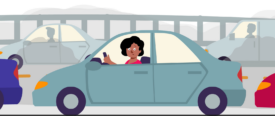


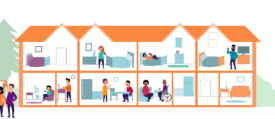
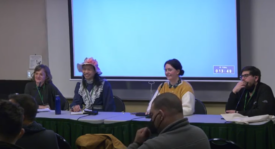


Comments